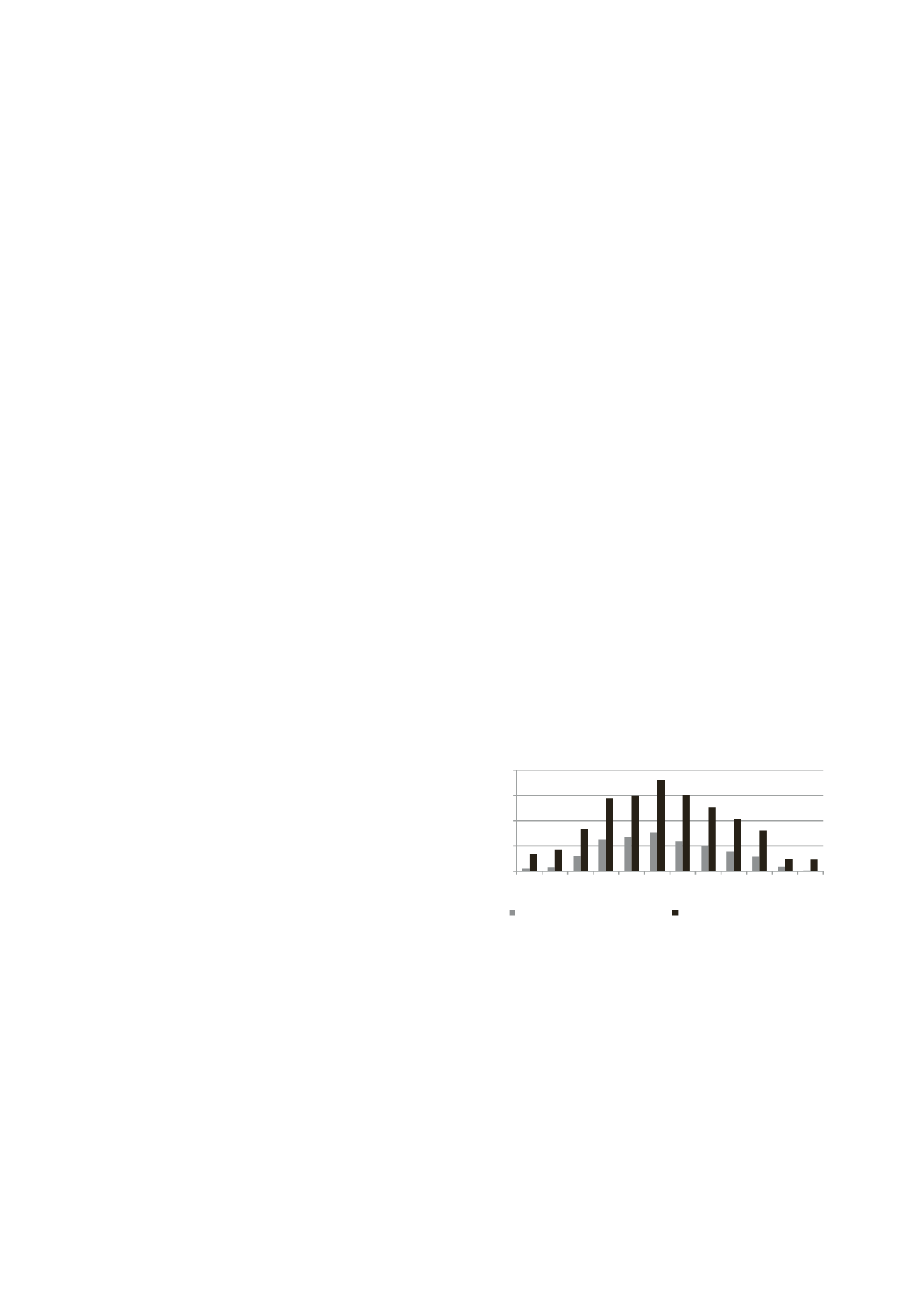
3351
Proceedings of the 18
th
International Conference on Soil Mechanics and Geotechnical Engineering, Paris 2013
1
Large Thermal Energy Storage at Marstal District Heating
Importante capacité de stockage de l'énergie thermique pour le chauffage collectif de Marstal
J. Dannemand Andersen & L. Bødker
GEO (Danish Geotechnical Institute), Denmark
M. V. Jensen
PlanEnergi, Denmark
ABSTRACT: For many years the district heating system in the town Marstal in Denmark has been based on oil fuels. During the last
decade Marstal District Heating has turned towards 100 % renewable energies, so that in 2012 a solar heat system
–
covering 10
hectares of land
–
will produce more than 50 % of the heat consumption and the rest from biomass energy. In Denmark solar heat
production is very modest during the winter, contrary to the heat consumption. The large percentage of solar heat coverage is made
possible by seasonal thermal energy storage large enough to preserve the solar energy produced during summertime until winter. For
this purpose a 75,000 m
3
pit thermal energy storage has been established. The pit measures 88 meters by 113 meters at the top and has
a depth of 16 meters, filled with water. The excavation for the pit goes through various layers of sand and clay below groundwater at
steepest possible slopes to ensure an economical design. In this article the geotechnical challenges during the planning and execution
of the pit are described.
RÉSUMÉ : Au cours de nombreuses années le système de réseau de chaleur de la ville de Marstal au Danemark a été basé sur les
combustibles pétroliers. Au cours de la dernière décennie, le chauffage urbain de Marstal
s’est
tourné à 100% vers les énergies
renouvelables, si bien qu’en
2012, un système de chauffage solaire, placé sur une superficie de 10 hectares de terrain, va produire plus
de 50% de la consommation de chaleur, le reste devant provenir de l'énergie verte. La production de chaleur solaire au Danemark est
très modeste au cours de l'hiver, contrairement à son besoin de consommation de chaleur. Le pourcentage élevé provenant de la
chaleur solaire est
rendu possible grâce à l’
utilisation de stockage saisonnier de l'énergie thermique permettant de garder l'énergie
solaire produite en été
jusqu’en
hiver. Dans ce but, une fosse de 75,000 m
3
,
oú l’énergie thermique est
stockée, a été établi. Cette fosse
remplie d'eau mesure 88 mètres par 113 mètres sur une profondeur de 16 mètres. L'excavation de la fosse passe au travers de couches
de sable et d'argile au-dessous de la nappe phréatique, avec des pentes raides au possible pour assurer une conception économique.
Dans cet article, les défis géotechniques au cours de la planification et de l'exécution de la fosse sont décrits.
KEYWORDS: Pit thermal energy storage; PTES; Seasonal thermal energy storage; Solar heat; Renewable energies.
1 INTRODUCTION
Denmark is placed in a climate where buildings need to be
heated during most of the year. In urban areas district heating is
dominating and district heating covers approx. 2/3 of the
consumers in Denmark. The district heating systems are
dominated by combined heat and power plants (CHP) widely
spreaded in Denmark. Traditionally the district heating is based
on mainly fossile fuels of coal, oil and gas, but waste and
biomass heating are also used. The remaining 1/3 of the
population is covered by individual heating dominated by gas or
oil. A minor part is heated by other types of energy e.g., wood,
geothermal energy, heat pumps etc.
A lot of district heating systems are turning from fossile fuels
towards renewable energies. Especially use of solar heating is
preferred for medium-sized plants as the technology is
developed and well proved. The energy production of solar
heating systems is though very dependent on the solar radiation,
and in Denmark the radiation is very modest during the winter,
almost inversely proportional to the need of heat consumption.
In figure 1 the average solar heat radiation and the solar heat
production during a year are illustrated.
In addition, the low heat consumption during summertime
dictates the maximum size of the solar heating system, and
consequently the solar heating system covers usually less than
10 - 20 % of the total heating consumption.
Figure 1. Monthly solar heat production and radiation at Marstal District
Heating 2010-1012
).
The percentage of solar heat in the district heating may be
increased by a seasonal thermal storage. The storage must be
large enough to preserve the solar energy produced during
summertime until winter.
Thermal energy is usually stored by heating up a material, and
later on the heat can be recycled to the consumers using a heat
pump. Water has shown to be an excellent heat storage material.
Water is cheap and has a reasonable heat capacity compared to
other materials. A relatively low value of the thermal
conductivity of water is compensated as water is easily movable
by pumping. Soil is also very cheap, but soil has poorer heat
capacities and the heat is not easily movable. Figure 2 and 3
show typical values of the thermal conductivity and heat
capacity for selected soils and water (Verein Deutscher
0
50
100
150
200
1 2 3 4 5 6 7 8 9 10 11 12
Solar heat production (kWh/m2)
Solar heat radiation (kWh/m2)
Large Thermal Energy Storage at Marstal District Heating
Importante capacité de stockage de l'énergie thermique pour le chauffage collectif de Marstal
Dannemand Andersen J., Bødker L.
GEO (Danish Geotechnical Institute), D nmark
Jensen M.V.
PlanEn rgi, Denmark


